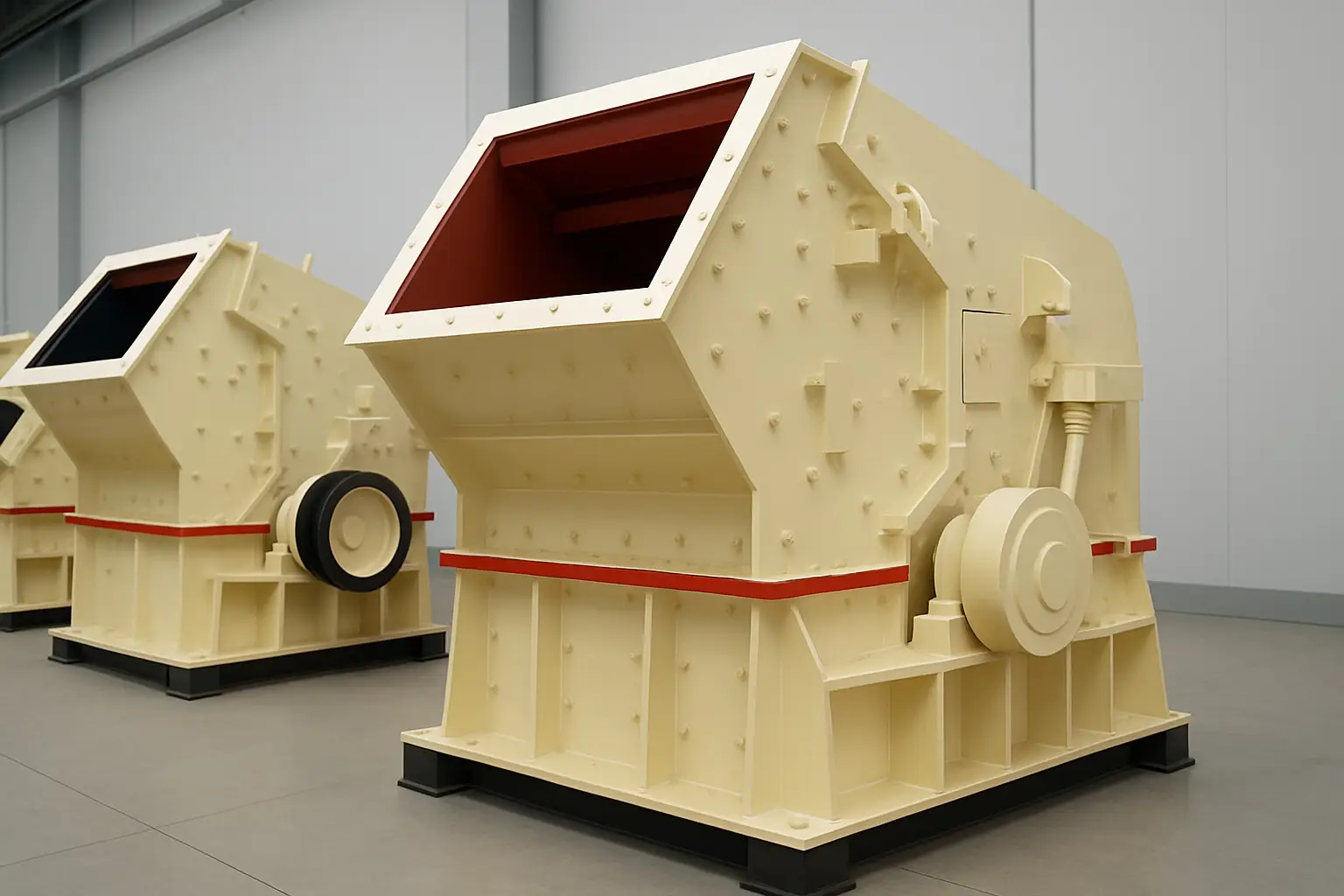Service
Impact Crusher
High-Efficiency Crushing Equipment for Various Materials
The impact crusher is an advanced and efficient crusher widely used in cement production and mining industries. It is suitable for crushing a variety of materials such as river gravel, granite, basalt, iron ore, limestone, quartz stone, coal gangue, dolomite, feldspar, calcite, talc, barite, and construction waste. This crusher stands out due to its compact size, simple structure, and large reduction ratio. It also consumes less energy, produces uniform particle sizes, and offers flexible selectivity for different materials

Impact Crusher
One remarkable feature of the impact crusher is its large feed opening along with a crushing cavity that is 1.5 to 2 times larger than other crushers of similar size, enabling it to handle bigger feed material with ease.
Technical Advantages of Impact Crusher
The impact crusher boasts a simple and compact design, making it lightweight and easy to install. It offers high production capacity and supports large feed sizes, thanks to its deep crushing cavity, which makes it suitable for tough, hard materials.
By crushing ore along natural joint surfaces, it achieves high crushing efficiency with lower power consumption. With a reduction ratio that can reach up to 40, the impact crusher simplifies crushing circuits by reducing the need for three-stage crushing processes to one or two stages, lowering equipment and operational costs.
The gap between the impact plate and the plate hammer is adjustable, allowing precise control over the discharge size and achieving well-shaped end products. Its high-chromium plate hammers provide excellent shock resistance and abrasion resistance, extending the crusher’s service life.
Additionally, the crusher features a keyless connection system, facilitating convenient maintenance while ensuring reliability and cost-effectiveness. It performs selective crushing, delivering uniform particle sizes and reducing wear parts consumption, resulting in higher combined benefits for operators.
Working Principle of Cement Impact Crusher
The impact crusher operates by utilizing the impact energy to fragment materials. When in operation, the motor drives the rotor to rotate at high speed. Incoming material enters the crusher’s working area, striking the rapidly moving hammers attached to the rotor. This collision breaks the material, which is then thrown against the impact plates (counter-attack devices) for secondary crushing.
The materials rebound back and forth between the rotor and the impact plates, undergoing multiple crushing cycles inside the crusher chamber. This repeated impact process continues until the material is crushed to the desired size and discharged through the bottom outlet.
Adjusting the gap between the counter-attack rack and the rotor allows operators to control the size and shape of the final product.
Raw materials enter from the top into a high-speed rotating turntable. Centrifugal force propels the material outward, causing stones to collide intensely with each other, resulting in high-density crushing. The materials impact repeatedly and create a vortex motion between the turntable and the crusher housing, producing multiple blows, friction, and grinding actions that reduce material size.
The crushed material is expelled from the lower discharge port, forming a closed-loop system controlled by screening equipment to ensure consistent particle sizing.
